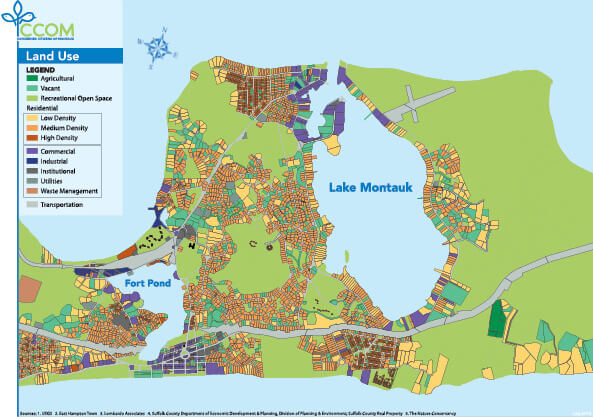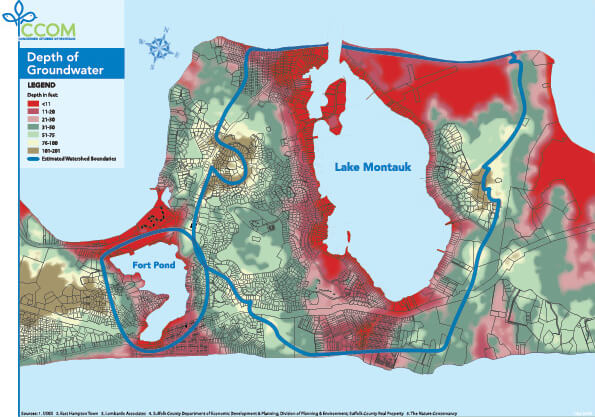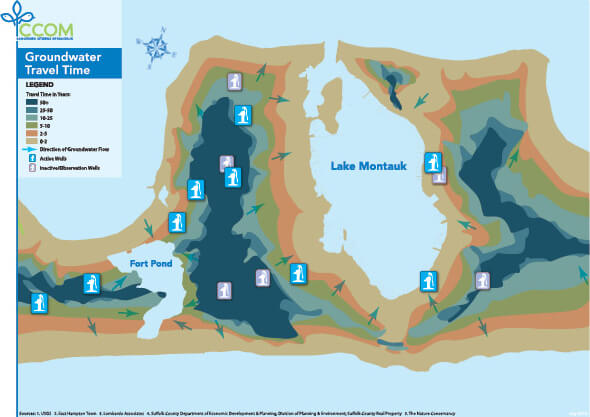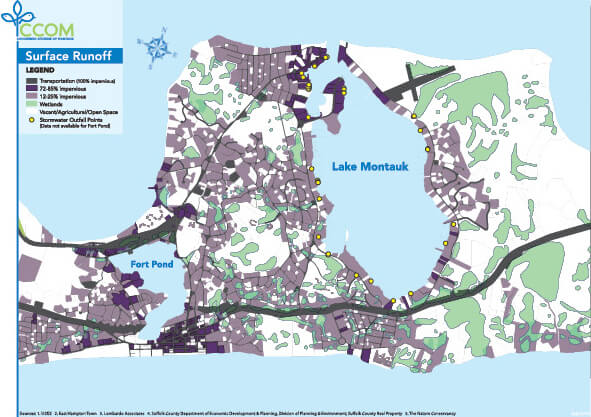Save MONTAUK’S WATERS
To increase the understanding of the water quality issues in Montauk’s local waters and the steps that can be taken now to address them, CCOM is launching a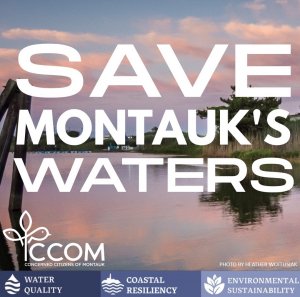 comprehensive public awareness campaign.
comprehensive public awareness campaign.
Our scientific testing of the waters in Montauk’s lakes, ponds and beaches and leadership on the remediation steps that have already begun in Fort Pond and Lake Montauk will provide the background to a series of public events over the next 2 months that will encourage greater public awareness and involvement in this important work.
Everything that Montauk stands for is inextricably linked to water. Fishing, surfing, boating, and swimming – they all require clean water. But Montauk’s ground and surface waters are threatened by pollution. Whether it is from inadequately treated wastewater, or the use of harmful pesticides, fertilizers, and chemicals, these compounds find their way into our waters and impede the safety, enjoyment and beauty of Montauk’s waters.
Everyone contributes to the problem, but more importantly, we all have a role to play in the solution. Government, businesses, homeowners, and visitors all have a responsibility here:
- Upgrade your current septic system to one that is designed to treat for and reduce nitrogen
- Support local efforts to bring community wastewater treatment to vulnerable areas
- Limit the impacts of stormwater runoff by aiding in the restoration of native wetland areas, stopping the use of harmful chemicals, and picking up after your pet and yourself
Join CCOM in our efforts to bring about change. SIGN THE PETITION and demand we hold ourselves accountable in taking action to SAVE MONTAUK’S WATERS!
How Do Pollutants Enter Montauk’s Waters?
- Groundwater: A significant percentage of pollution entering Lake Montauk and Fort Pond is due to poorly maintained septic systems
- Runoff: Pollutants such as fertilizers, oils, cleaners, and pet waste are carried by rain and snowmelt directly from unbuffered adjacent land, roads, and docks into surface waters
- Stormwater Conveyances: Although you may not live on the water, pollutants entering storm drains or streams from your property and/ or roads are delivered untreated directly into waterbodies
What Are the Effects?
- Nitrogen loading can lead to harmful algal blooms, and can even increase toxicity levels of the algae
- Bacteria in the water makes swimming and recreation dangerous for our pets and families
- Toxic chemicals and waste can contaminate our drinking water supply
- Water quality has a profound effect on the birds, fish, and shellfish that live in and around Montauk’s waters
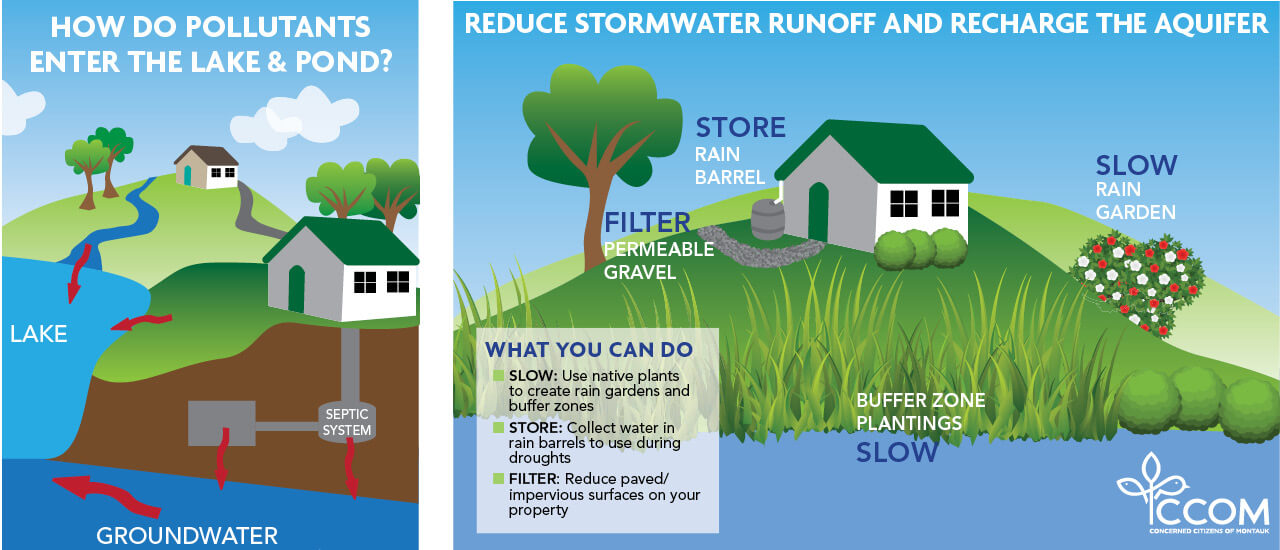
What You Can Do
- Wastewater Treatment
- Pledge to have your septic or cesspool inspected and pumped regularly based on usage
- Consider upgrading to a new low-nitrogen system – both Suffolk County and the Town of East Hampton are offering incentives!
- Reduce stormwater runoff and recharge the aquifer
- Slow: Use native plants to create rain gardens and buffer zones
- Store: Collect water in rain barrels to use during droughts
- Filter: Reduce paved/impervious surfaces on your property
- Practice Sustainable Property Management
- Use toxin-free landscaping
- S.T.O.P. – Stop Throwing Out Pollutants
- Educate your friends and neighbors about how they can affect Montauk’s waters.
What We Do On the Land Matters
Locate your property on the maps below
Understanding the relationship between your property and the water around us is the first step to helping restore Montauk’s waters.
How does development in Montauk impact water quality?
Wastewater systems in Montauk are mostly individual systems. In more densely developed areas with a greater concentration of septic systems, there is a higher risk of groundwater contaminants entering surface waters, but there are also opportunities in those areas to implement neighborhood-scale solutions.
What role does stormwater pollution play in the water quality problems in Lake Montauk and Fort Pond?
Pollutants on the roads and other manmade surface are washed off during rainfall and make their way toward our surface waters. Slowing and storing stormwater captures and filters out pollutants such as oil, fertilizers, pesticides, pet/animal waste and sediment, keeping it from entering our local waterways. Improving our stormwater infrastructure is critical to restoring Lake Montauk and Fort Pond.
